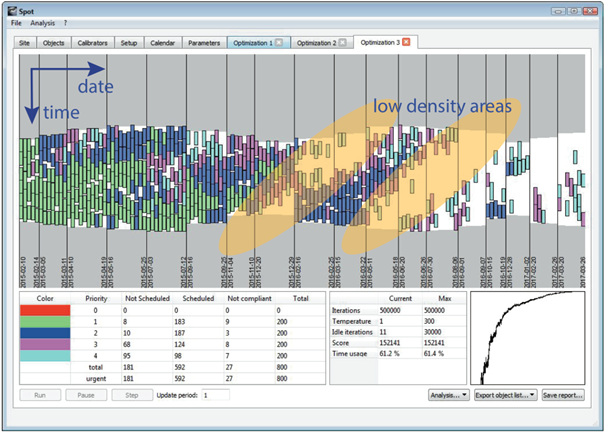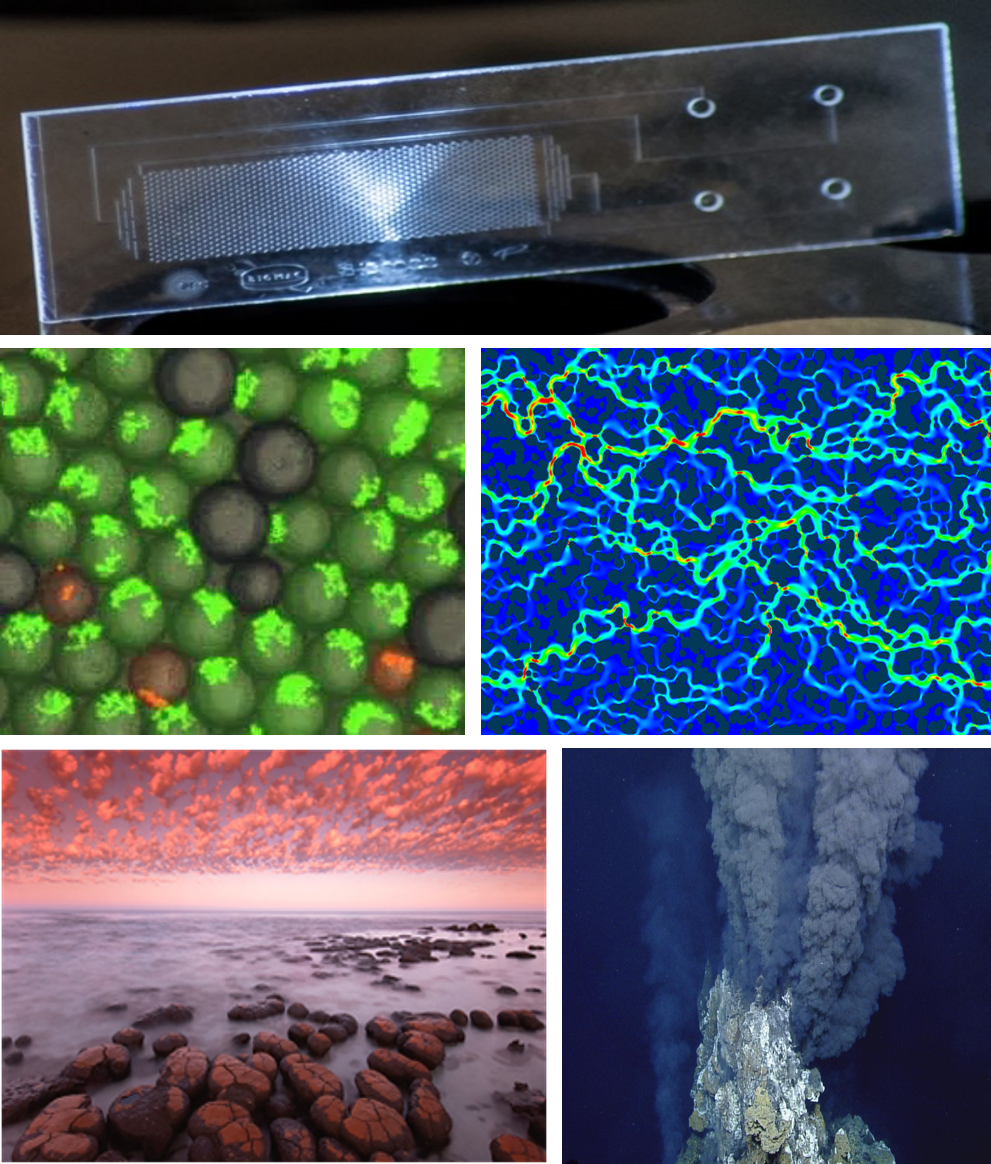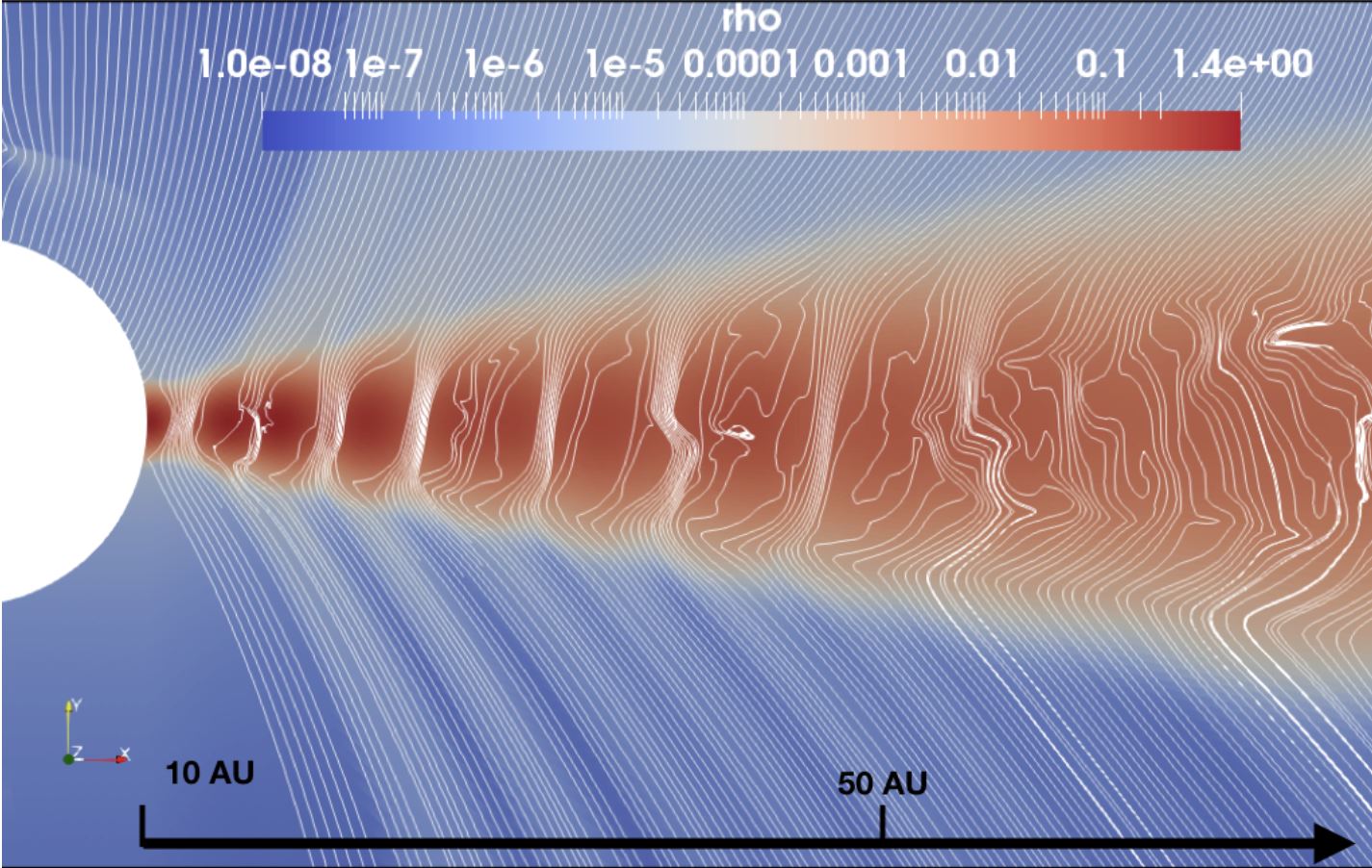
SmSO
SmSO
Overview
Bringing together optimization experts and astronomers to build an automatic planning tool that takes into account atmospheric and meteorological conditions and their forecasts.
Anne-Marie LAGRANGE, DR CNRS, Observatoire de Paris, LESIA
Julien MILLI, Astronome, IPAG, Grenoble
Nadia BRAUNER, PU UGA, G-SCOP, Grenoble
Pierre LEMAIRE, PU INP, G-SCOP, Grenoble
Hadrien CAMBAZARD, MCF INP, G-SCOP, Grenoble
Nicolas CATUSSE, MCF INP, G-SCOP, Grenoble
The success of direct imaging of exoplanets depends not only on instrumental performance, but also on observing conditions during data acquisition: atmospheric turbulence and weather conditions (wind, water vapour, atmospheric transparency) can influence the final contrast by several orders of magnitude. Consequently, scheduling observations at the right time is of the utmost importance. We have previously developed a first automatic scheduling tool, SPOT, to organize the guaranteed time observation campaign on the VLT/SPHERE instrument (800 targets, 200 observation nights) dedicated to exoplanet detection. For each target, SPOT takes into account its position constraints, scientific priority, instrument set-up times, etc. to generate observation schedules. However, SPOT does not take into account atmospheric and meteorological conditions, nor their forecasts. By bringing together optimization experts and astronomers, we will build such a tool, using all available information on atmospheric and meteorological conditions, both in real time and in forecasts (typically up to a few days ahead), to optimize real-time and medium-term schedules.
To develop
Our researchs
Formalize the link between external conditions and image quality
Analyze high-contrast images and identify relevant quality criteria, then develop a machine learning tool to link these criteria to external conditions and star properties.
Building models and algorithms for scheduling under uncertainty
Propose an algorithm that takes into account the quality of the observation, which depends not only on the chosen scheduling interval, but also on external conditions.
Develop a scheduling tool that takes external conditions into account for astronomers
Develop a tool that integrates the algorithms developed, as well as interfaces with astronomical and meteorological databases and with users.
The Consortium
LESIA, IPAG, G-SCOP (CNRS, Université Grenoble Alpes)
Scientific expectations
The first objective is to describe, specify and formalize how external conditions influence image quality. External conditions include estimated meteorological and atmospheric data at different altitudes (relative humidity, wind intensity and direction, etc.). This work will use SPHERE archive data and the ESO atmospheric database. Analysis of high-contrast archive images will enable us to identify relevant quality criteria. The formalization process will lead to expressions (rules, functions) that link image quality criteria to observational conditions.
The second objective is to build models and tools (mainly algorithmic) for scheduling observations over time with uncertainties in external conditions. This tool will have to build a scheduling that maximizes the quality of observations, taking into account both astrophysical constraints and atmospheric/meteorological conditions.
The SPOT+ software will incorporate a scheduling solver based on these tools, as well as an interface with the observatories’ turbulence and weather forecasting databases, and a user interface for astronomers.
Societal impacts
Optimization problems that take account of external, uncontrollable conditions arise in a variety of industrial situations: manufacturing, maintenance planning, etc. One example is power generation, where operators have to choose which power plants to switch on or off, and how much electricity to produce at any given time, given a number of uncertainties (e.g. wind, water flows, weather conditions), prices and demand.
The tools developed here (filtering algorithms in constraint programming, ad-hoc algorithms for finding another non-dominated solution from the current one) will be of interest to companies developing ad-hoc solvers dedicated to scheduling, or generic solvers with routines for scheduling. They will be offered to the optimization community through presentations and articles, and the code will be open.
Skills development
A community of 6 researchers, teacher-researchers and engineers: 1 post-doc, 1 PhD student, 1 engineer.
Consortium location : Paris-Meudon (LESIA, OBSPM) et Grenoble (IPAG, G-SCOP)


